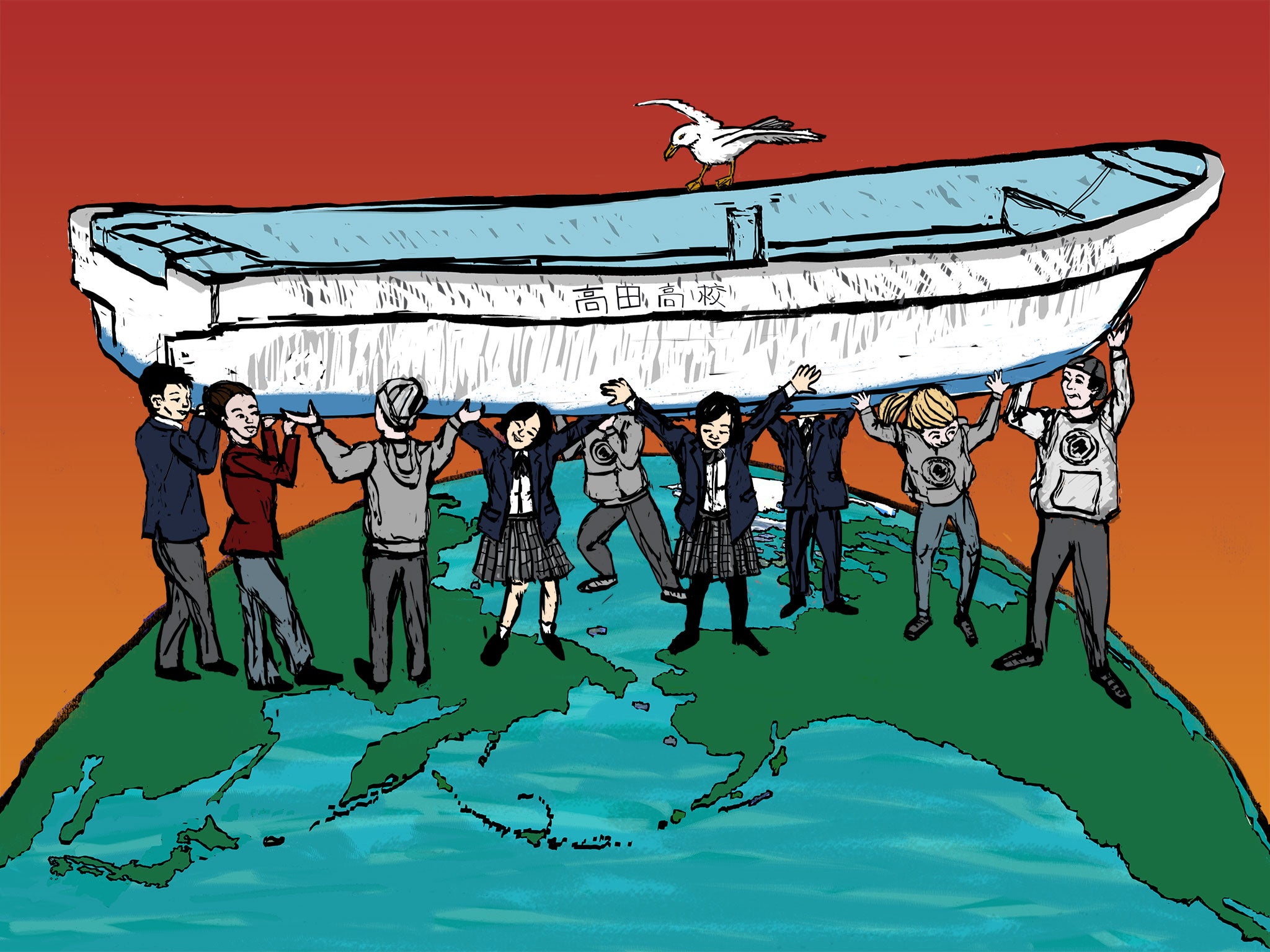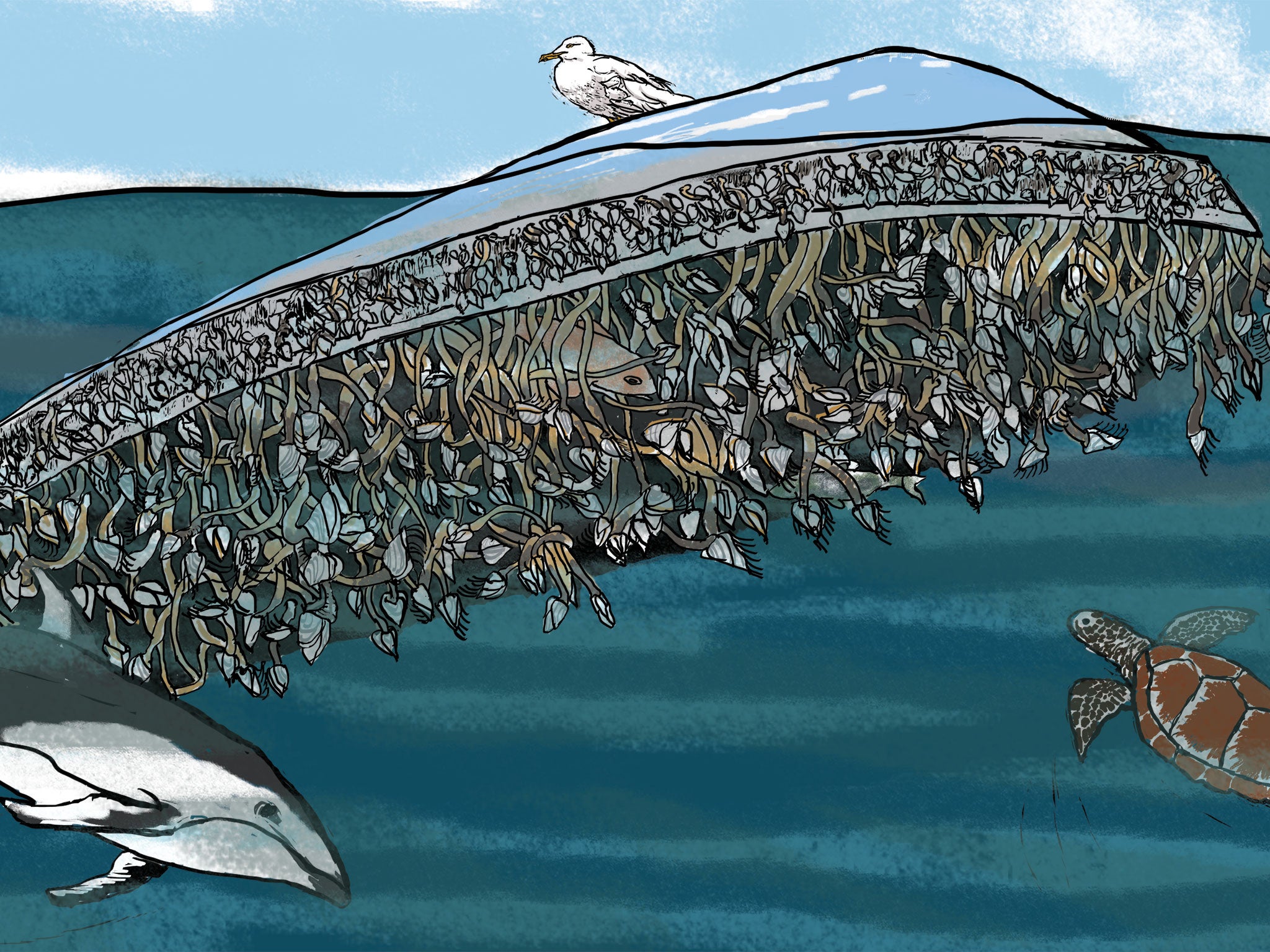The Extraordinary Voyage of Komame: How a tsunami boat washed up in the US was returned to Japan by students
Two years after the 2011 tsunami, a small Japanese boat washed ashore in California. It was the start of a beautiful trans-Pacific exchange - and the story has now been captured in a book

In March 2011, an earthquake deep beneath the Pacific Ocean triggered a tsunami which destroyed much of Japan's Pacific coast. Though the devastation was widespread, a small fishing town in the Iwate prefecture called Rikuzentakata was particularly badly hit; almost "wiped off the map" according to contemporary reports. Before the tsunami hit, students at Takata High School would practice fishing in a small boat called Kamome, the Japanese word for seagull. Amid the loss of lives and the extensive damage to Rikuzentakata's buildings, it is unsurprising that, when the waves retreated, no one noticed that Kamome was missing.
Two years later and more than 8,000 miles away, a small, weather-beaten boat covered in barnacles washed up in Crescent City, California. If there is a symbol of hope for the survivors of Rikuzentakata as they attempt to rebuild their homes and lives, it is that boat. The story has now been captured in a book, The Extraordinary Voyage of Komame: A Tsunami Boat Comes Home, published with English and Japanese text side by side.
The book is co-authored by Lori Dengler and Amya Miller, and tells the story of how students at the Del Norte high school in Crescent City discovered Japanese characters while cleaning the boat, which allowed them to trace its origins back to Rikuzentakata.
Having made that discovery, the students decided to do whatever it would take to return the boat to its owners. The book further narrates how the eventual return of Kamome has inspired a lasting friendship between the two schools.
Dengler, a tsunami expert and professor in geology, was one of the first to realise where Kamome must have come from.
"Debris swept offshore by the tsunami got caught in the Pacific Gyre – the great clockwise circulation in the ocean caused by the rotation of the earth, temperature variations and weather patterns," she explains. "Kamome floated upside down with only the hull barely above water. Its average speed was less than a third of a mile per hour."

Kamome's journey to California, and the campaign to return it to Japan, has been a process that Miller describes as miraculous. "In my previous role as the head of public relations for Rikuzentakata City Hall, one of my tasks was to update the city's Facebook page," she says. "One day, I found a message from Professor Dengler including photos of this boat. I forwarded the photos to my friend at Takata High School to ask if this boat had come from there. He said that it had. Lori and I kept up the correspondence and found the stories surrounding the boat to be too beautiful to ignore. The Mayor of Rikuzentakata described the unfolding of this story as a 'series of miracles'."
Miller is in no doubt of the miracle still needed for Rikuzentakata's citizens. "The population is still in mourning and rebuilding is a long way off," she says. "In Japan, ideas of mental health are different to those in the West. My hope is that the book will allow discussions about emotions to take place and create a dialogue on how children might be allowed to express feelings about the disaster in a way that allows them to move beyond trauma."
It is a big hope for a children's picture book. But as Amy Uyeki, the Californian artist with Japanese roots who was drafted in to illustrate the book, says: "I want those who read the book to see that, though we may be separated by miles, languages, culture and religion, we all share the same basic hopes and fears. Kamome travelled thousands of miles, and ended up in a community much like the one it had left behind."
Join our commenting forum
Join thought-provoking conversations, follow other Independent readers and see their replies
Comments